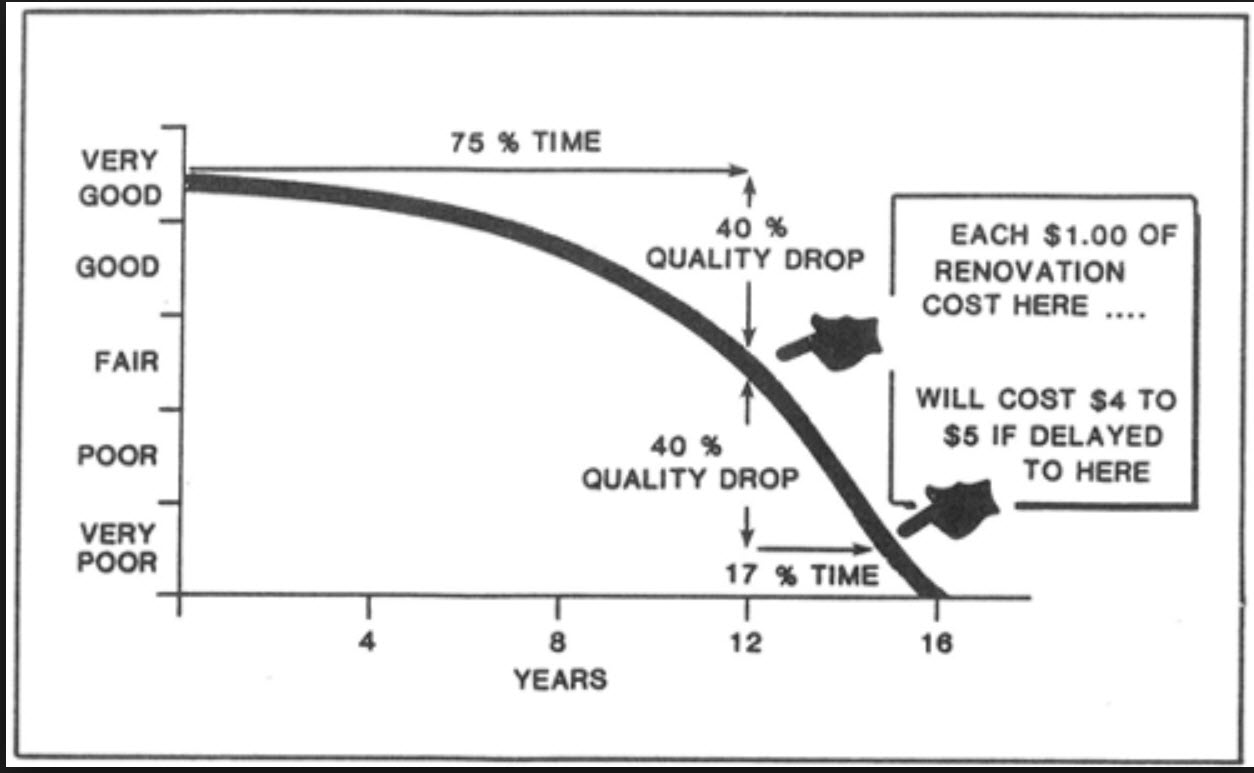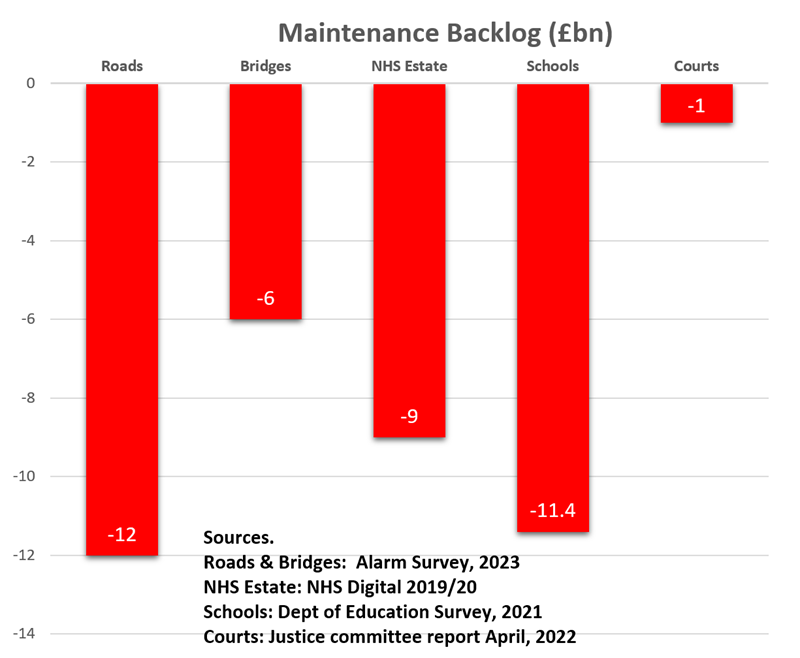Public sector buildings, such as schools, hospitals, and government offices, play a vital role in serving the needs of communities. However, these buildings often face a significant challenge which is addressing the maintenance backlog in public sector buildings. As you can see in the graph above huge backlogs have grown which exceed that in infrastructure! The schools backlog is reputedly more than £15bn on current figures.
Over time, limited budgets, competing priorities, and inadequate resources have resulted in a huge backlog of maintenance and under capital investment, posing risks to the functionality, safety, and efficiency of these crucial facilities. In this blog, we’ll explore the implications of the maintenance backlog in public sector buildings and discuss potential solutions.
Deteriorating Infrastructure
The maintenance backlog has led to a gradual deterioration of infrastructure in public sector buildings. Delayed repairs can exacerbate existing issues, causing further damage and increasing the cost of eventual repairs. This not only compromises the functionality of the buildings but also impacts the well-being and productivity of occupants.
Safety Concerns
A backlog of maintenance can result in safety hazards for building users. Faulty electrical systems, plumbing leaks, or structural weaknesses pose risks to the occupants and can lead to accidents or injuries. Ensuring the safety of individuals accessing public sector buildings should be a top priority, necessitating prompt attention to maintenance needs.
Inefficient Energy Consumption
Outdated or poorly maintained systems in public sector buildings contribute to inefficient energy consumption. Aging heating, ventilation, and air conditioning (HVAC) systems, inadequate insulation, and malfunctioning equipment can lead to excessive energy waste. Addressing the maintenance backlog can result in energy-efficient upgrades, reducing operating costs and minimising the environmental impact of these buildings.
Negative Impact on Services
The maintenance backlog not only affects the physical infrastructure but also impacts the delivery of services provided by public sector buildings. For instance, schools may struggle to create a conducive learning environment, hospitals may experience equipment failures or cancelled operations, and government offices may face IT infrastructure issues. These challenges can impede the effective functioning of these institutions, hindering their ability to serve the public effectively.
Financial Burden
The backlog is a result of limited budgets and competing funding priorities. However, neglecting maintenance needs leads to higher costs in the long run as illustrated in the image to the right.
It’s crucial to allocate adequate funding and develop long-term financial strategies to tackle the backlog effectively.

5 measures for addressing the maintenance backlog
Addressing the maintenance backlog in UK public sector buildings requires a comprehensive and strategic approach. The following measures will help:
1. Adequate Funding
Allocating sufficient, timely funds to address maintenance needs and prioritising long-term investment in building infrastructure.
2. Asset Management
Implementing robust asset management systems to monitor and plan maintenance activities proactively.
3. Preventive Maintenance
Emphasising preventive maintenance practices to identify and address issues before they escalate.
4. Collaboration
Encouraging collaboration between government agencies, building owners, and maintenance contractors to streamline processes and maximize efficiency.
5. Technology Adoption
Utilizing technology solutions, such as facility management software and IoT sensors, to improve maintenance planning, asset tracking, and resource allocation.
Addressing the maintenance backlog in public sector buildings will ensure they are safe and support the services they are meant to help deliver. Prioritising maintenance needs, allocating adequate resources, and adopting proactive strategies will enable these buildings to continue serving the needs of communities effectively.
Ultimately, investing in the maintenance and upkeep of public sector buildings is an investment in the well-being and productivity of the nation.
Altuity’s technology will help manage your buildings – contact us for an informal discussion or visit our Product pages.

